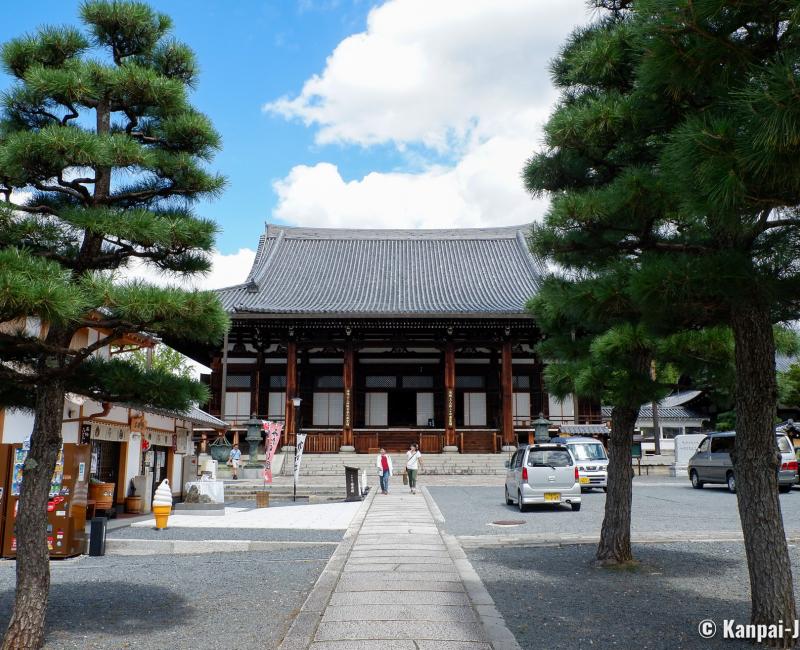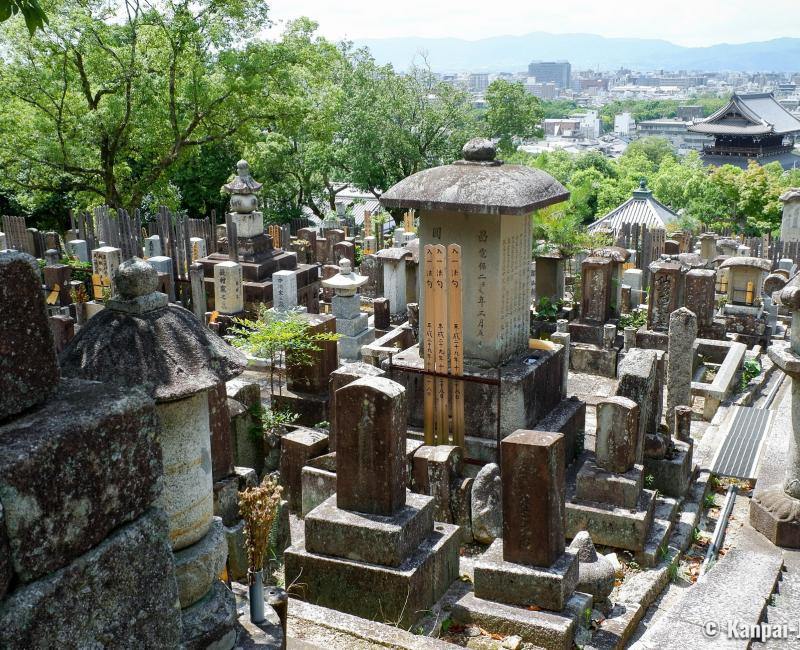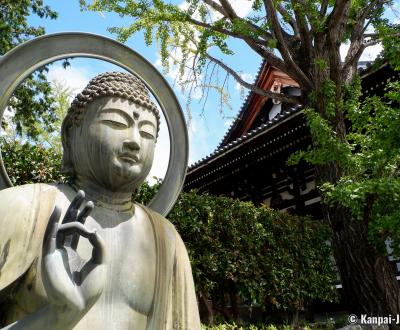Konkai Komyo-ji
Kurodani Temple on the Heights of Kyoto
Konkai Komyo-ji is an important temple of the Pure Land School or Jodo Buddhism located in the east of Kyoto, nicknamed "Kurodani-san" by the neighborhood’s inhabitants. The site encompasses a beautiful graveyard, a few unusual treasures and delivers its best during seasonal changes: in early April with the cherry blossoms and in late autumn with the maple trees surrounding the huge temple gate.
The hills surrounding Kyoto downtown shelter several temples and shrines that are not easily accessible, and therefore often left out of the mass sightseeing itineraries. There are so many beautiful sites in Higashiyama mountains that exploration of the area is pretty much endless. The vast Buddhist complex Konkai Komyo-ji is one of the hidden gems, spreading in the small hilly neighborhood of Kurodani, from which its nickname Kurodani-san derives.

On the lands of Amida Bouddha
With more than ten pavilions, the site is one of the main temples of Jodo Buddhism, or Pure Land School, founded by monk Honen. Its building started in 1175 under the drive of the Fujiwaras, one of the most influential families of the Heian period (794 – 1185).
Despite sustaining many damages and arson throughout their history, and especially during the Onin War in the 15th century, the pavilions still retain some historical authenticity. Among the most remarkable are:
- The impressive Sanmon Gate, made of wood in 1860,
- Miedo Hall, that shelters Honen’s grave and whose last reconstruction dates back to 1942,
- Amidado Hall, the oldest remaining structure of the temple, built in 1605,
- The three-story pagoda, built in the 17th century and designated Japan’s Important Cultural Property.
Konkai Komyo-ji is also home to several precious and original artworks, such as:
- Monju Bosatsu, a statue of the wisdom bodhisattva, made by Japanese sculptor Unkei (1151 – 1223), who also created the two Nyo-o guardians statues of Todai-ji’s south gate,
- Kibi Kannon, the goddess is pictured standing and surrounded by its thousand arms,
- Wonderful sliding doors decorated with tigers painting, dating back to the 19th century, when the Aizu clan, led by samurai Matsudaira Katamori settled at the temple during the Bakumatsu period (1853 - 1868) before the end of the Tokugawa shogunate,
- Lastly, the dry garden Shiun no niwa that retraces the life of monk Honen.
Note that the full visit of the temple’s grounds, including some rooms and the garden, is only possible during limited periods throughout the year (mainly in autumn 🍁).

Original discovery of the graveyard and its panorama on Kyoto
After visiting the various buildings, the walk continues on a small stone bridge that crosses a pond inhabited by koi carps. Then, a long stairway sided by cherry trees 🌸 gives access to a beautiful cemetery. In a peaceful and green scenery, the paths winds between the tombs and the Buddhist statues built on the hillside.
Among these stone constructions, a funny small statue is hiding, named Goko Shiyui Amidabutsu (ごこうしゆいあみだぶつ). This unusual Buddha with an Afro-like hairdo is an attraction for visitors. According to the legend, the aspiring sage sat motionless meditating for such a long time that his hair grew to such extend. The statue is dated from the middle of the Edo period ((1603 – 1868) and is one of the rare representations of this Buddha Amida in the archipelago (less than twenty exist).
From the foot of the three-story pagoda overlooking the whole site, an unobstructed view on the temple’s roofs and Kyoto city below unfolds. This outdoor observatory is very pleasant and offers a very peaceful contemplation.
Kurodani temple is ideal to enjoy the wonders of a traditional and spiritual Kyoto, without the crowds of tourists huddling around a handful of major spots. The temple’s grounds are wide, and the several levels of the visit itinerary require to climb many stairs.

